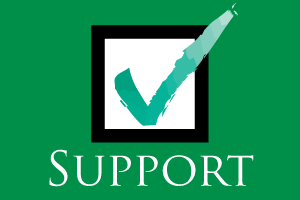Update, July 30, 2019 03:00 p.m.: The California Department of Industrial Relations today announced that the Office of Administrative Law approved the Protection from Wildfire Smoke regulation on July 29, 2019.
An emergency regulation requiring California employers to protect employees from potential harm due to wildfire smoke is likely to be in effect soon.
Adopted by the Cal/OSHA Standards Board on July 18, the emergency rule requires employers to monitor the Air Quality Index (AQI) in the workplace and take steps to protect workers when the AQI reaches certain levels.
The California Chamber of Commerce and a coalition of employer groups have been commenting on the emergency rule at every stage of the process and will continue to advocate adjustments to clarify employer responsibilities.
Requirements for Employers
The emergency rule will be in effect until the permanent rule is passed (likely one year) and applies to workplaces where the AQI for airborne particulate matter (PM) 2.5 is 151 or greater. Employers must:
• Check the AQI for PM 2.5 before each shift to determine if it is at or above 150 AQI for PM2.5.
• Reduce harmful exposure to wildfire smoke if feasible—for example, by relocating work to an enclosed building with filtered air or an outdoor location where the AQI for PM 2.5 is 150 or lower.
• Provide respirators such as N95 masks to all employees for voluntary use.
• Provide training on the new regulation, including the health effects of wildfire smoke and the proper use and maintenance of respirators.
Advocacy Impact
In response to comments from the CalChamber coalition and others, the Standards Board dramatically increased the threshold at which respirator use would be required in the adopted emergency rule, which will minimize the days that businesses will need to provide medical evaluations and fit testing to all outdoor employees or close in order to comply with the regulation.
In addition, the CalChamber pointed out numerous inconsistencies and vagueness concerns with the emergency rule.
At the July 18 meeting, David Harrison, one of two labor representatives on the seven-member Standards Board, acknowledged these concerns and urged the Cal/OSHA staff to be careful to avoid inflicting unnecessary harm when enforcing the emergency rule.
Ongoing Concerns
The CalChamber and employer community will continue to seek changes to provide employers with greater certainty when implementing the wildfire regulation.
The petition worker groups filed that led to the adoption of the emergency rule focused explicitly on “outdoor occupations such as agriculture, landscaping, maintenance, commercial delivery, and other activities not considered to be ‘first response.’”
The emergency rule goes beyond outdoor occupations and may affect even indoor workers or workers who go from inside to outside, thereby having a cumulative exposure to the wildfire smoke of only one hour during a shift.
Examples of such exposure include a waiter who walks in and out of a restaurant to serve food, an employee staffing a drive-up window, a car salesperson who is both indoors and on the lot, and a driver who moves in and out of a delivery vehicle throughout the day.
The CalChamber-led coalition emphasized that Cal/OSHA should not use the emergency rule as a means to adopt standards that are broader than the original intent.
Ambiguous or confusing language in the emergency rule that needs to be clarified includes:
• When the ventilation or other features of an indoor environment are enough to allow the area to be exempt from the wildfire smoke regulation.
• How employers should fulfill their obligation to train employees.
• Procedures for testing the fit and evaluating the effectiveness of powered air respirators.
• Whether facial hair should be shaved or allowed with use of a respirator.
What’s Next
Cal/OSHA also has launched the process of adopting a permanent regulation to protect employees from being exposed to unhealthy levels of wildfire smoke.
A meeting has been set for August 27 in Oakland to allow stakeholders and the public to provide information and scientific data on employee exposure to wildfire smoke, control measures, feasibility, or costs.
More information on the advisory committee meeting is available on Cal/OSHA’s website at www.dir.ca.gov.
Resources for Compliance with Emergency Rule
The emergency rule will take effect immediately upon its approval by the Office of Administrative Law (OAL), probably in early August—meaning employers should start preparing now. In preparing to comply, employers should:
• Review the emergency regulation and supporting documents—the pdf is available here. A Spanish version also will be available.
• Prepare to monitor the AQI at worksites, using either onsite monitoring or a state or local air quality monitoring site, such as: the U.S. Environmental Protection Agency’s Air Now or the South Coast Air Quality Management District’s Current Air Quality Data.
• Prepare for compliance—this includes preparing training, advising supervisors, and also acquiring N95 respirators so that multiple shifts of employees are prepared for compliance should a wildfire occur.
The emergency wildfire regulation will be the subject of an upcoming CalChamber podcast.
Staff Contact: Robert Moutrie


